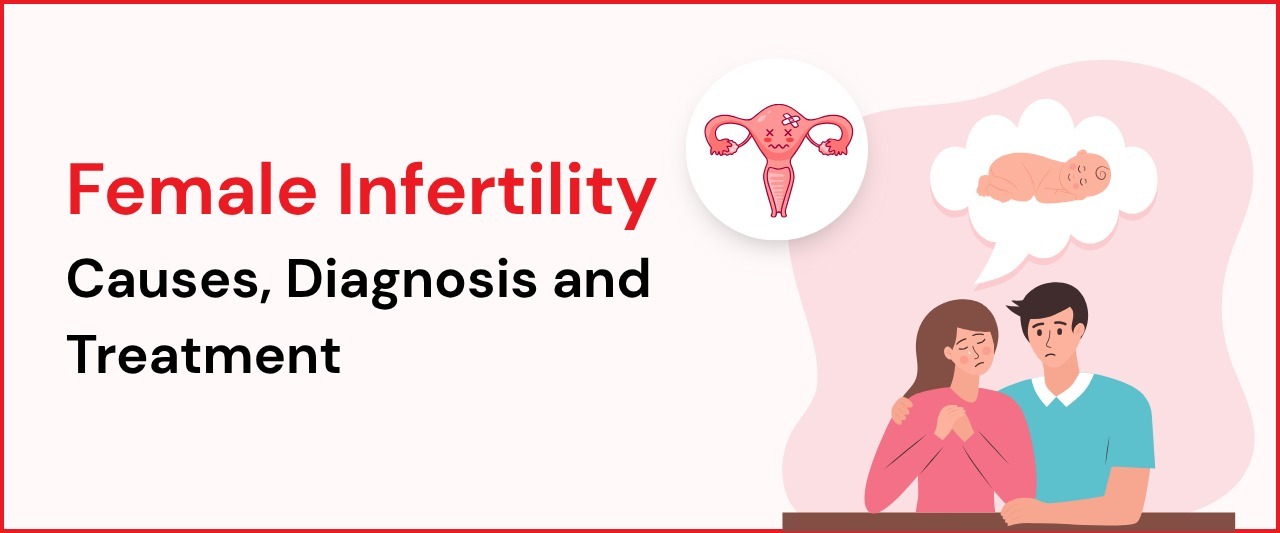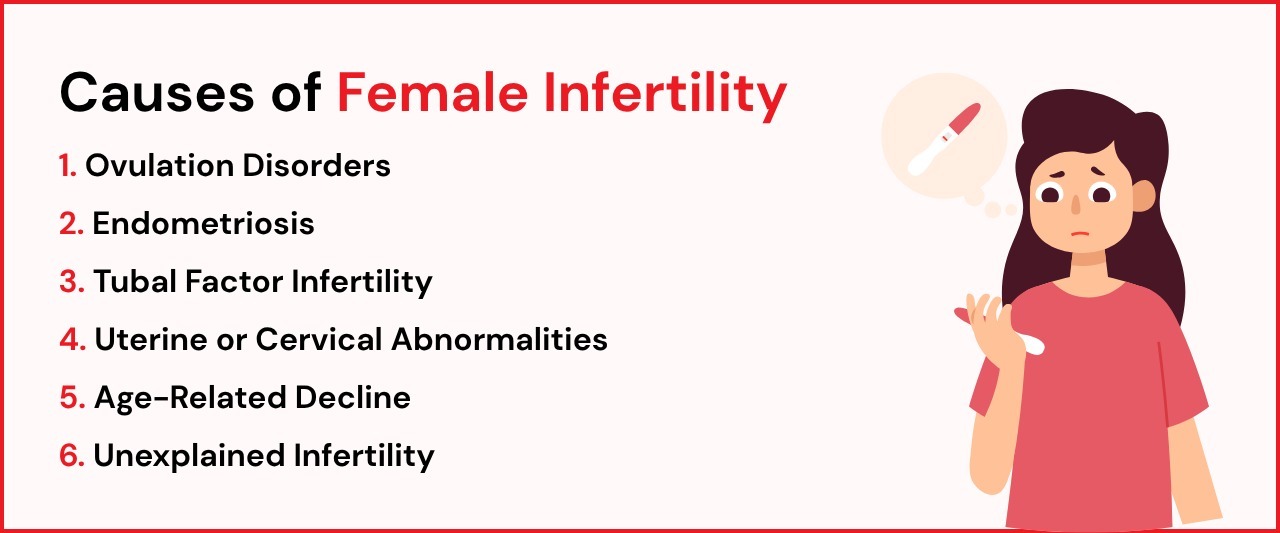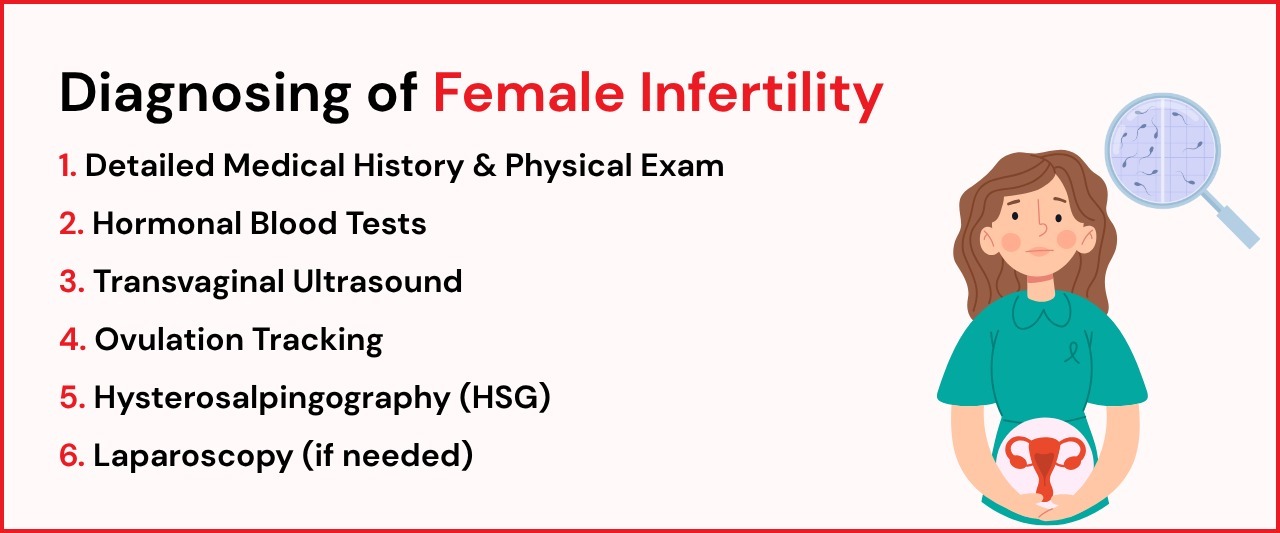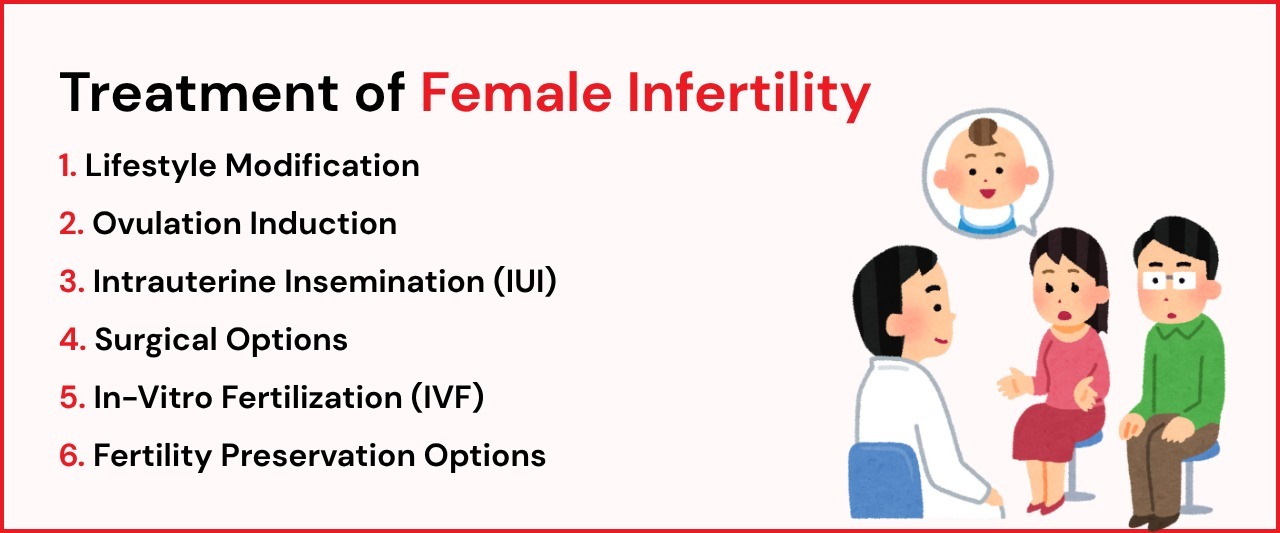Female Infertility – Causes, Diagnosis and Treatment

Becoming a mother is one of the most cherished dreams for countless women—but for many, that journey is not always easy. According to the World Health Organisation (WHO), 1 in 6 couples globally experience infertility, and female factors contribute to nearly 40–50% of all cases. In India alone, up to 27.5 million couples are struggling with infertility, with rising numbers particularly in urban areas, where lifestyle and late pregnancies are becoming more common.
Even though infertility often feels like a lonely struggle, it’s a widespread issue—and the encouraging news is that it can often be successfully treated.
Infertility is medically defined as the inability to conceive after 12 months of regular, unprotected intercourse (or 6 months if the woman is over 35). With factors like PCOS (affecting nearly 1 in 10 Indian women), thyroid imbalances, endometriosis, or even unknown causes, the journey to conception can be complex—but not impossible.
Understanding Female Infertility
Infertility has become increasingly common and is now recognised as a significant health challenge impacting countless families across the globe. According to the World Health Organisation (WHO), around 17.5% of the adult population—roughly 1 in every 6 people—face infertility at some point in their reproductive life. Alarmingly, both high-income and low- to middle-income countries report similar prevalence, proving it’s a universal issue, not just a lifestyle disease.
In India, the numbers are equally concerning. Recent data shows that 10–15% of couples in India struggle with infertility, and urban regions are witnessing a steady rise. This can be attributed to increasing stress, sedentary lifestyles, obesity, delayed marriages, late childbearing, and environmental pollution. Furthermore, the average age of first-time mothers in urban India has risen to over 30, increasing age-related fertility challenges.
Despite medical advances, many women delay seeking help, often due to stigma or lack of awareness. This delay can drastically reduce chances of conception, especially after the age of 35, when egg quality and quantity begin to decline sharply.
Understanding the scale of infertility is the first step toward addressing it. The good news? With early intervention and expert care, the chances of a successful pregnancy can significantly improve.
Common Causes of Female Infertility

Infertility in women doesn’t have a one-size-fits-all explanation. It can be caused by a wide range of physical, hormonal, lifestyle, and age-related factors—often working in combination. Let’s break down the most common causes, supported by real data:
1. Ovulation Disorders
One of the leading causes of female infertility, ovulation issues account for nearly 25–30% of cases. Women may ovulate irregularly or not at all due to hormonal imbalances. Around 10% of Indian women in their childbearing age are affected by PCOS, making it one of the most common reproductive health conditions. Other causes include thyroid disorders (both hypo- and hyperthyroidism) and high levels of prolactin (hyperprolactinemia).
Signs to look out for: Irregular periods, acne, excessive hair growth, and sudden weight gain.
2. Endometriosis
Endometriosis, often overlooked, is a significant factor in female infertility—impacting between 10 to 15% of women overall and nearly half of those struggling to conceive. It occurs when tissue similar to the uterine lining grows outside the uterus, causing inflammation, scarring, and blocked fallopian tubes.
Common symptoms: Pelvic pain, painful periods, and pain during intercourse.
3. Tubal Factor Infertility
About 20–25% of female infertility cases are linked to damage or blockages in the fallopian tubes. These tubes are essential for egg and sperm to meet. Infections like pelvic inflammatory disease (PID), past surgeries, or ectopic pregnancies often lead to this condition.
4. Uterine or Cervical Abnormalities
Structural problems like fibroids, polyps, or congenital anomalies in the uterus can interfere with implantation or embryo development. Fibroids alone are found in up to 70% of women by age 50, though not all impact fertility.
5. Age-Related Decline
A woman’s fertility naturally declines with age. After 35, both the number and quality of eggs drop rapidly. According to studies, the chance of natural pregnancy falls to 15–20% per cycle by age 35, and even lower after 40.
6. Unexplained Infertility
Sometimes, even after extensive testing, no specific cause is found. This accounts for 20–30% of infertility cases. However, with advances in reproductive technology, even these cases can be successfully treated.
Diagnosing Female Infertility at Imprimis IVF

The first step to overcoming infertility is understanding what’s causing it—and that begins with a thorough and personalized diagnosis. At Imprimis IVF, we follow a step-by-step, evidence-based approach to identify the root cause of infertility with precision and compassion.
Studies show that in nearly 85% of infertility cases, a detailed evaluation can help pinpoint the cause. Our diagnostic process combines cutting-edge technology with patient-first care to ensure no clue is missed.
Here’s how we assess female fertility:
- Detailed Medical History & Physical Exam: We begin with your menstrual cycle history, lifestyle factors, past surgeries, and any known medical conditions like thyroid disorders or PCOS.
- Hormonal Blood Tests: We test for key hormones, including FSH, LH, AMH, Prolactin, and TSH. These help us evaluate ovarian reserve, ovulation regularity, and overall hormonal health.
- Transvaginal Ultrasound: Used to assess the uterus, endometrial lining, ovarian follicles, and detect conditions like fibroids or polycystic ovaries.
- Ovulation Tracking: Monitoring ovulation through blood tests and follicular scans gives insight into whether and when you’re ovulating.
- Hysterosalpingography (HSG): An advanced imaging test to check if the fallopian tubes are open and functioning properly.
- Laparoscopy (if needed): A minimally invasive procedure to detect and treat hidden issues like endometriosis, adhesions, or tubal blockages.
Treatment for Female Infertility

Infertility may feel overwhelming—but with the right diagnosis and personalised treatment, over 85% of couples can conceive successfully with medical intervention. At Imprimis IVF, we believe that no two journeys to parenthood are the same. That’s why we tailor every treatment plan based on your unique diagnosis, age, and fertility goals.
Let’s explore the most effective treatment options for female infertility:
1. Lifestyle Modification
Sometimes, simple changes can lead to big results. Studies show that losing just 5–10% of body weight can help restore ovulation in women with PCOS. At Imprimis, we support you with nutrition guidance, stress management tools, and holistic wellness strategies to optimise your fertility naturally.
2. Ovulation Induction
If irregular or absent ovulation is the issue, medications like:
- Clomiphene citrate
- Letrozole
- Gonadotropin injections
…are prescribed to stimulate egg release. These are typically the first line of treatment and can help up to 80% of women with ovulation issues begin ovulating regularly.
3. Intrauterine Insemination (IUI)
A simple, non-invasive procedure, IUI involves placing washed and concentrated sperm directly into the uterus during ovulation. It’s ideal for:
- Mild male factor infertility
- Unexplained infertility
- Cervical factor infertility
When combined with ovulation induction, IUI can offer success rates of 10–20% per cycle.
4. Surgical Options
For physical causes like fibroids, endometriosis, or blocked fallopian tubes, minimally invasive laparoscopy is often recommended. Surgical correction of these issues can significantly increase the chances of natural conception.
5. In-Vitro Fertilisation (IVF)
IVF is the most advanced and effective fertility treatment available. It involves:
- Controlled ovarian stimulation
- Egg retrieval
- Fertilisation in a lab
- Embryo transfer into the uterus
IVF offers success rates of 50–60% per cycle for women under 35 and is the best option for:
- Severe tubal blockages
- Advanced age
- Endometriosis
- Unexplained infertility
At Imprimis IVF, we use cutting-edge technologies like:
- Blastocyst culture
- Frozen embryo transfer (FET)
- Preimplantation genetic testing (PGT)
These innovations improve implantation rates and reduce miscarriage risk.
6. Fertility Preservation Options
We also offer egg freezing for those who want to preserve fertility due to medical conditions or career planning.
No matter the challenge, your dream of parenthood is possible—and we’re with you at every step. Let’s find the solution that’s right for you.
Why Choose Imprimis IVF for Female Infertility Treatment
When it comes to infertility, choosing the right clinic can make all the difference. At Imprimis IVF, we combine medical excellence with compassionate care to give every couple the best possible chance at parenthood.
With a success rate of 60–65% in IVF cycles for women under 35, our outcomes are well above the national average. We use globally benchmarked protocols, world-class lab infrastructure, and advanced techniques like blastocyst culture, frozen embryo transfer (FET), and preimplantation genetic testing (PGT) to ensure higher success and safer pregnancies.
What truly sets us apart is our patient-first philosophy. From your first consultation to your final result, we personalise every treatment based on your diagnosis, age, and fertility goals. Our team includes highly experienced fertility specialists, embryologists, and counsellors who understand not just the science, but the emotional journey behind it.
Imprimis IVF has already helped hundreds of couples across Odisha, Jammu & Kashmir turn hope into reality.
If you’ve been trying to conceive without success, it’s time to trust a team that treats infertility with both precision and empathy. Because at Imprimis, your dream of becoming a parent matters deeply.
Conclusion for Female Infertility
Infertility affects millions—but it doesn’t have to define your journey. With over 27 million couples in India struggling to conceive, you are not alone. The good news? More than 85% of infertility cases can be treated with the right medical intervention.
At Imprimis IVF, we combine science, technology, and empathy to turn uncertainty into possibility. Whether it’s a simple hormonal imbalance or a complex reproductive condition, our team is equipped with the tools and expertise to help you succeed.
If you’ve been trying to conceive for more than 12 months (or 6 months if you’re over 35), don’t wait. Early intervention significantly improves your chances of success—especially with treatments like IUI and IVF that are most effective when started early.
Book your consultation with Imprimis IVF today.
Imprimis IVF Centre Branches:

